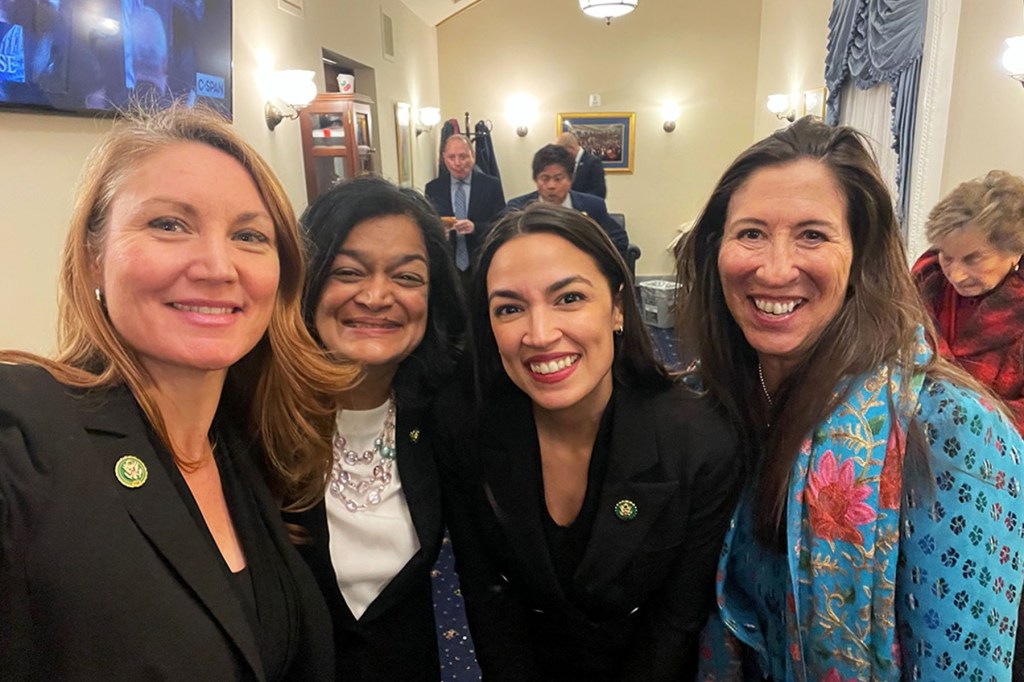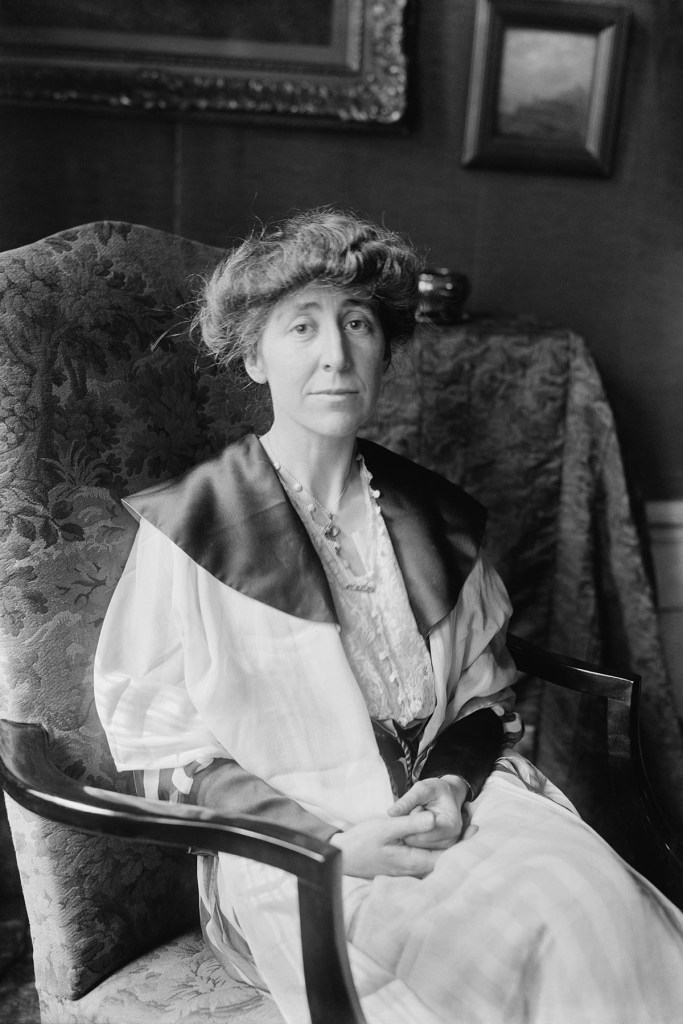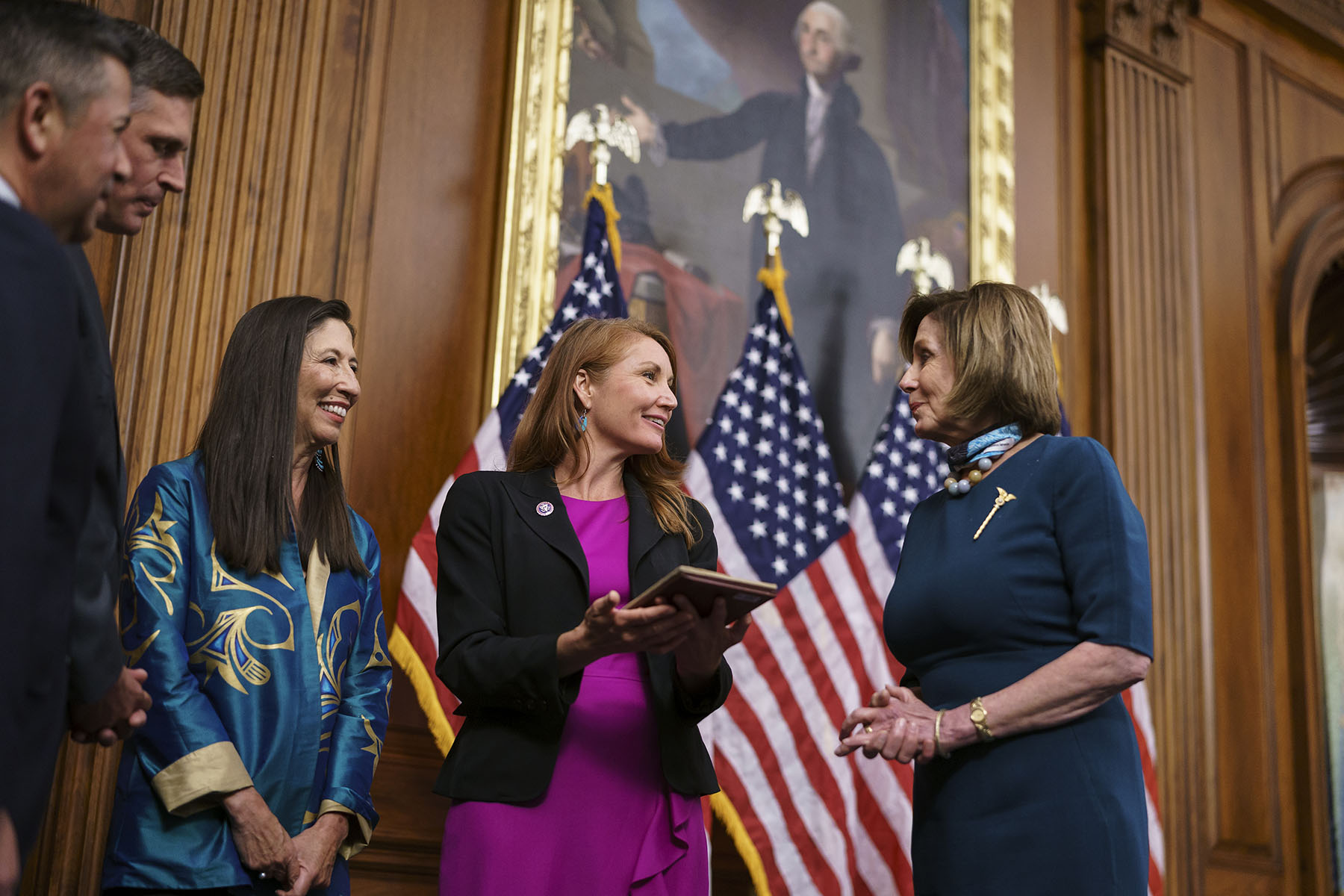When Reps. Melanie Stansbury of New Mexico and Emilia Sykes of Ohio made their inaugural bids for Congress, early support from Elect Democratic Women (EDW) — a political action committee founded and led by House Democratic women — was critical to their success.
“EDW came in with money. They came in with support. I’ll never forget my first Zoom with the women of Congress. It was dozens of women serving, and honestly, I could cry,” said Stansbury, who was recruited to run in a 2021 special election to succeed then-Rep. Deb Haaland, President Joe Biden’s pick to lead the Department of the Interior. Democrats’ slim House majority made it a high-stakes contest.
“The way that they welcomed me, encouraged me, helped raise money for me and made it seem possible, was everything,” she added.
After Stansbury won, she was sworn in on the House floor in June 2021, surrounded by new women colleagues.
“There’s something so powerful about having this network,” she said. “It’s not just about raising money. It makes it possible for women to be here in a place that they have been so excluded from throughout the history of this country.”
Sykes, who represents a highly competitive toss-up seat in Northeast Ohio, said EDW’s investment and advocacy helped her win what many thought was “an unwinnable race” in 2022.
“Elect Democratic Women had a different perspective, and was really willing to go out on a limb in ensuring that not only were they talking about my race as a winnable race, but ensuring that they would get out in front of me and advocate for me in rooms that I was not in,” she said.
Democrats are aiming to win back the U.S. House in the 2026 midterms, and EDW believes their path to doing it runs through women candidates: They have an ambitious goal of having 100 Democratic women simultaneously serving in the U.S. House in 2027. (There are currently 94 voting House Democratic women; five are retiring or seeking higher office in 2026).

“We think 100 is a great number. It’s sort of a showcase number,” said Rep. Lois Frankel of Florida, a founding member of EDW. “Of course, we would want more, but I think there’s something about hitting 100, right?”
EDW has spent millions since its launch in 2018 to reelect Democratic women.
The PAC supported 129 women running for office in the 2024 cycle, including 16 incumbents reelected to battleground House districts, 17 new Democratic women elected to the caucus and three new women elected to the U.S. Senate: Sens. Elissa Slotkin of Michigan, Angela Alsobrooks of Maryland and Lisa Blunt Rochester of Delaware.
The party out of power typically gains House seats in midterm elections, giving Democrats a shot at winning back the chamber, where Republicans hold a slim majority, in 2026.
Republicans hold 219 of 435 seats, while four seats remain vacant following the resignation of former GOP Rep. Mark Green of Tennessee and the deaths of Democratic Reps. Gerry Connolly of Virginia, Raúl Grijalva of Arizona and Sylvester Turner of Texas. Those seats will be filled after special elections later this year.
“One hundred women in 2026 is not only a goal for elevating women’s leadership in Congress, and the long march towards equity in Congress, but it is also how we win back the House,” said Stansbury.
Stansbury drew a comparison to the 2018 midterms, a Democrat-led wave year largely driven by women candidates in an election shaped by health care and a reckoning over sexual misconduct by powerful men. Stansbury believes U.S. politics is undergoing a “generational change” and sees 2026 as a key “watershed year” for women reaching parity and equal representation in leadership roles.
“When you get women candidates, they just tend to be really high-quality candidates who are highly motivated, highly educated, in it for the right reasons, and have a drive to support their communities, and I think that that affects the qualities of races that they run,” Stansbury said.
Women’s representation in Congress stalled in the 2024 election cycle. While a record number of Democratic women now serve in the House, the number of women sworn in to Congress in January fell for the first time since the 2010 midterms.
And Democratic candidates, especially women, are navigating a far different political climate than in 2018. President Donald Trump returned to power after being found liable for sexual abuse and running a campaign on an aggressive, ascendant vision of masculinity. Women and families have been hard hit by reductions to the federal workforce and Republicans’ party-line tax cut and spending legislation, which included sweeping cuts to programs disproportionately used by women and families. Democrats, meanwhile, are contending with poor approval ratings, are lagging behind their Republican counterparts in fundraising and are at a crossroads as to the future of their party.
Frankel believes voters will “rise up” against Trump, who has seen his approval ratings drop to their lowest point since he took office in January, is underwater with voters on key issues and has recently been beset by infighting and discontentment within his base over his administration’s handling of files related to the case of the late disgraced financier Jeffrey Epstein.
Though the midterms will be a referendum on Trump, Frankel said it’s critical for Democrats to run on issues like health care, caregiving and affordability, including child care costs — issues important to voters and especially women.
“I think from the Democratic point of view, it’s going to be important that we can explain clearly what we will do and can do differently if we are able to regain the House and even the Senate,” she said.
Jeannette Rankin became the first woman to serve in Congress in 1917, three years before the 19th Amendment granted women the right to vote — a right that was still restricted for many women of color. Women are half of the U.S. population, but hold just 28 percent of the seats in Congress. Just 449 women have served in either chamber of Congress, making up about 4 percent of all those who have served in either the House or Senate.
There wasn’t a women’s restroom off the Senate floor until 1993, and it took another 18 years for House women to get a designated restroom off of the House floor in 2011. A bipartisan but ultimately unsuccessful effort earlier this year to allow new mothers in the House to vote by proxy showed how the Capitol is, in many ways, still not caught up to the realities of mothers in the workforce.
“I think part of why EDW has been under the radar is because it’s new in the history of the institution, in terms of having a dedicated entity that is there for the specific purpose of recruiting, running and retaining women,” Stansbury said. “And I think it’s been transformative.”

EDW is now one of the three main groups, along with EMILY’s List and Emerge America, that recruits, trains and supports Democratic women candidates. EDW’s work may be the least well-known and well-publicized of the three, but its investments in key races have been highly effective.
“If you are a woman in a male-dominated field like politics or running for Congress, people will tell you no without even thinking twice about it,” Sykes said. “But you have to have enough backbone to push back and refuse to accept that for an answer to move forward, and that’s what Elect Democratic Women does.”
In 2026, EDW is supporting the reelection bids of 10 frontline Democratic women in battleground seats, including Sykes, and is so far backing five Democratic women challengers running in competitive Republican-held seats.
EDW is also supporting current and former House members running for higher office. They include former Rep. Abigail Spanberger, running for governor of Virginia, Rep. Mikie Sherrill, running for governor of New Jersey and Haaland, who is running for governor of New Mexico in 2026. The group is playing in competitive Democratic Senate primaries, backing House Democratic women running in open U.S. Senate races in Illinois, Michigan and Minnesota.
Vice President Kamala Harris’ defeat last November dashed, for the second time, the hopes of many to see the United States’ first woman in the Oval Office. But Stansbury believes 2026 is laying the groundwork to break that ultimate glass ceiling.
“I think this era that we’re living through, when we elect our first woman president, we’ll see that the work that we’re doing now is what made it possible for that to happen,” she said.
When asked what electing 100 Democratic women to the House would mean, Sykes invoked the late Supreme Court Justice Ruth Bader Ginsburg, who famously said that there would be enough women on the Supreme Court “when there are nine.”
“If we’re being thoughtful and we want to have accurate representation based on the population, 435 is not necessarily the answer,” Sykes said. “But what I think that comment says is … we have to look at the world where it is possible to see women in every role, in every space and every place where decisions are being made, and not think that is achievement, it’s just what is good for the country.”






